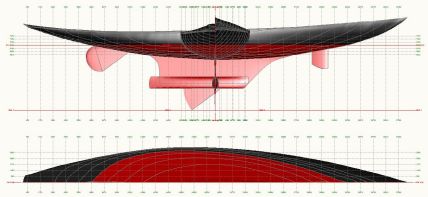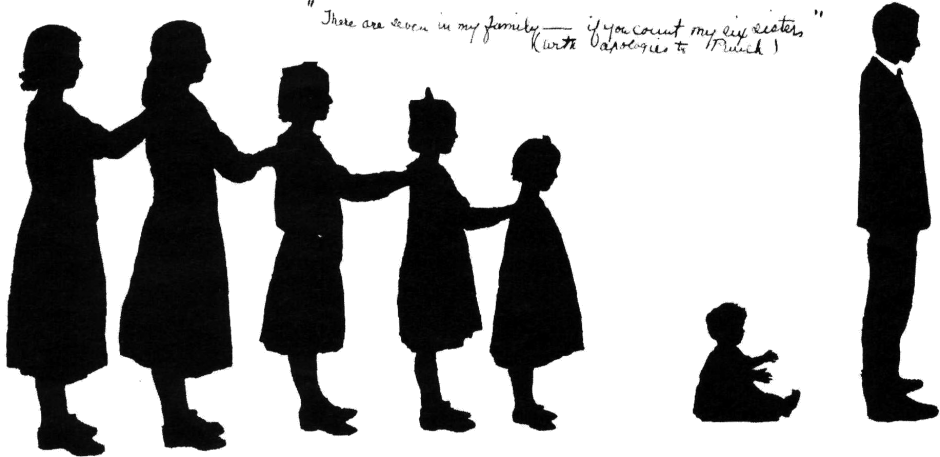Yves GARY Hits: 10723
Category: DESIGNERS
 John Bryant Paine (1870-1951) is the second son of the seven children of Gen. Charles J. Paine. The large family lived in their big property in Weston. The Weston house had a schoolroom behind the grand staircase where the children did their lessons in the spring and fall. In the 1880s the older boys, Sumner and John, went to Mr. Hopkinson’s school in Boston before going on to Harvard.
John Bryant Paine (1870-1951) is the second son of the seven children of Gen. Charles J. Paine. The large family lived in their big property in Weston. The Weston house had a schoolroom behind the grand staircase where the children did their lessons in the spring and fall. In the 1880s the older boys, Sumner and John, went to Mr. Hopkinson’s school in Boston before going on to Harvard.
Much later, Frank, attended Middlesex School. The headmaster, Frederick Winsor, was married to Frank’s sister Molly.

Both Sumner and his younger brother John Bryant served in the Massachusetts Regiment during the Spanish-American War, although they did not see combat. John Bryant, Harvard class of 1891, continued on at the law school but did not complete his degree. Although their interests in sports and the military were similar, the personalities of the two were quite different. John B. is quite like his father. He is a very modest young man and belongs to an entirely different set.
Sumner and John were among 13 self-appointed U.S. delegates to the first modern Olympic games, held in April 1896 after a lapse of 1,500 years. Eight of the athletes were members of the Boston Athletic Association (BAA), the only club in the United States to accept the invitation of the newly formed International Olympic Committee to send a team. The brothers won three first place medals in revolver and pistol contests. The first day John won easily with a score of 442, Sumner was second with 380, and the next closest score was below 200.

John was a skilled yachtsman. A “chip of the old block,” wrote one newspaper reporter, who added that “yachting is second nature to the Paines.” John joined his father in the three triumphant America’s Cup races. Six years after the victory of the Volunteer in 1887, John designed and built one of the four defenders of 1893. Stewart and Burney designed the Pilgrim for a Boston syndicate, the Vigilant and Colonia were built for New York syndicates by Herreshoff, and General Paine staked his hopes on the Jubilee, designed by his son John B. Paine. In the elimination races, the Vigilant defeated the Jubilee and after that, General Paine gradually withdrew from yachting.
Aboard the Jubilee with his father in the cup race of 1893, the New York Times called him “the very incarnation of ideal young Boston” and the Boston Globe commented on his fashion and habits, so like his father’s:
He is no dude. He is not fastidious in his dress, wears old clothes when yachting, and never owned a yachting suit. He has never liked society, and it is told of him that some years ago . . . his mother offered him $25 a dance for every one which he attended. . . . He is the youngest of the designers of the present field of cup defense.
John and his father were similar in many ways. It was not just the mustache, modest demeanor, and passion for sailing but also their life pattern: law training, early restlessness, military service, marriage, and finally management of the family fortune.
In 1900, at age 30, John married Louise Rue Frazer, an art student and friend of his sister. The couple settled in Weston in a clapboard house off Boston Post Road that the general had built in 1884. The garage had a machine shop where John, his hands covered with grease, tinkered with the automobiles that were his second passion after sailing.

The seven children of John Bryant Paine: Helen Paine Kimball made this 1920 photographic silhouette of her nephew and six nieces. At the bottom, John B. Paine Jr. wrote, “There are seven in my family—if you count my six sisters (with apologies to Punch)”
 After the general’s death, John Bryant Paine moved into the Big House with his wife, Louise, his oldest son, John Bryant Jr. (1901-1976), and his six daughters: Helen (b. 1904), Caroline “Carol” (1906—2000), Iulia ( 1909-1943), Louise (b. 1911), Charlotte “Chattie” (1913—1966), and Sarah “Sal” (b. 1919). Except for winterizing the house, he made few changes.
After the general’s death, John Bryant Paine moved into the Big House with his wife, Louise, his oldest son, John Bryant Jr. (1901-1976), and his six daughters: Helen (b. 1904), Caroline “Carol” (1906—2000), Iulia ( 1909-1943), Louise (b. 1911), Charlotte “Chattie” (1913—1966), and Sarah “Sal” (b. 1919). Except for winterizing the house, he made few changes.
During the 1920s, various members of the J.B. Paine family traveled to Europe, the American West, and, most ambitiously, to Nairobi and the Serengeti Plain. They returned from Africa after five months with hundreds of photos and the heads and skins of gazelles, lions, a water buffalo, dik-dik, giraffe, and leopard lat.er mounted in the great hall of the Big House. A newspaper gossip column commented on the trip: John Bryant Paine pursued his later avocations with the same energy earlier devoted to sailing and automobiles.
In addition to hunting and fishing, he loved photography and maintained a darkroom in the Big House. He took elaborate home movies and in 1932 created several three-reel productions with Brent Dickson as actor and scriptwriter. In the ’30s and ’40s, he took up furniture making. With the assistance of his wife, who did the carving, he produced fine reproductions of classic Early American furniture in a workshop in the attic. He made leatherwork purses and albums and built a model airplane with a five-foot wingspan. In the late 1935 he experimented with audio recording. He also kept a collection of springer spaniels.
After World War II, farm operations dwindled on the Highland Street property. The orchards were let go and fields became overgrown. John Bryant Paine died in 1951. His widow, Louise Frazer Paine, moved into a smaller house on the property in 1967 and died the following year.

- General Charles Jackson Paine. “The Modern Discoverer of Weston” - Weston Historical Society
- John Paine (sport shooter) - Wikipedia, the free encyclopedia
